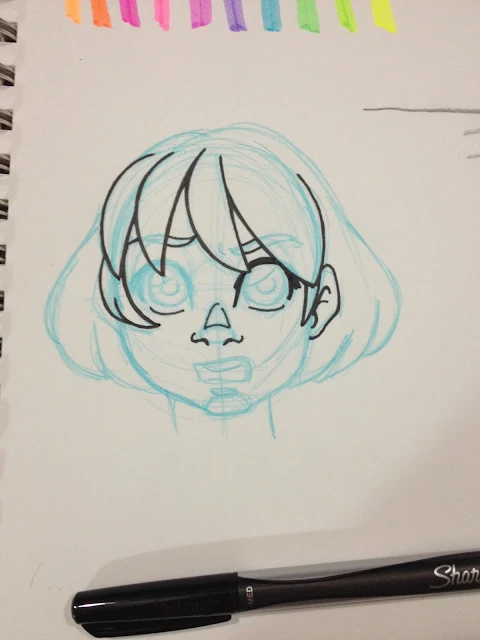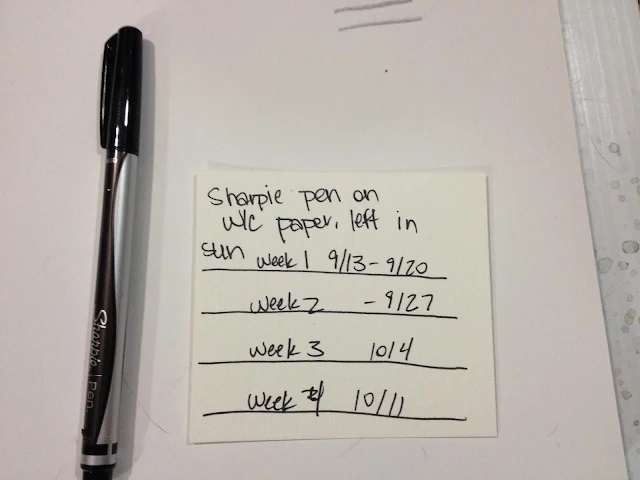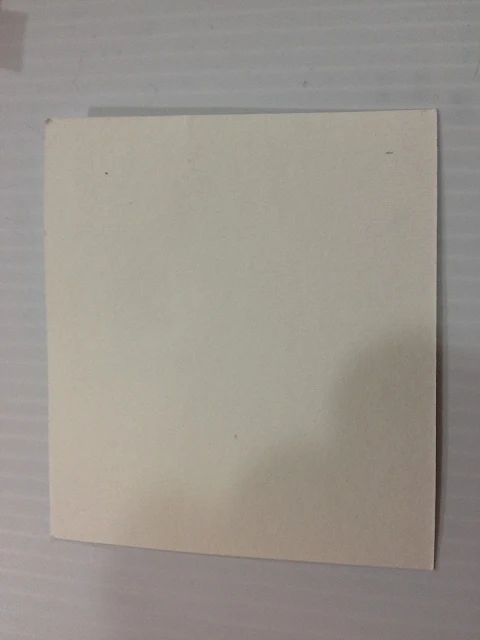Target Art Supply Review: Sharpie Pen
Today is my younger brother's 25th birthday!
I think everyone with internet access has seen a Sharpie permanent marker, and I think almost everyone has used one. We're familiar with the bulky bodies, the stubby nibs, the fumes.
Sharpies have changed a lot over the years, and there's a lot of variety in their product line now. You can get anything from ol' faithful black and chisel industrial application to Sharpie paint markers, and even Sharpies with flexible brush tips (which I may have to revisit on this blog). The Sharpie site is pretty cool too, and the blog has lots of neat ideas to inspire you, so it really seems like the brand is making an effort to change with the times.
The Sharpie Pen exemplifies some of these changes, but it's one of Sharpie's older renovations. Sleek body with a silver and black design, multiple nib sizes, and zero headache-inducing fumes, the Sharpie Pen has more in common with technical pens and fineliners than it does with its brandmates.
When I was in highschool, this and Zig Millenium pens were the tools of choice for inking my comics. At the time, I didn't really give a lot of throught to archival quality- my plan was just to scan the pages and put them online, and I didn't even get that far. I was limited to what my local Walmart offered- my area didn't even get a Target in driving distance until I started undergrad at UNO.
Sharpie pens aren't limited to Target however- you can find them just about anywhere. Today I'm reviewing black ink, but I also have the colored inks, so I'll revisit Sharpie pens again later. If you'd like your own set that includes both a black Sharpie pen, as well as the glorious colors of the rainbow, you can help me out by clicking the referral link below.
And if you'd like to start off simple, with just black, the link below will help you there too.
The Packaging
The package promises that Sharpie Pens are bleedproof and indictes the ink color and nib size.
The back includes a little information, such as a claim that Sharpie pens are 'smear resistant', water resistant, and has an acid free ink formula, but the majority of the back is an advertisement for the Sharpie Liquid Pencil.
The Pen
Both of the Sharpie Pens in the package I purchased from the Kenner Target are size Medium, which is about an .8. I'm assuming the fine is probably around a .5, and I'm not sure if Sharpie makes a Sharpie Pen Bold, but if so, I'm guessing it's about a 1mm, probably a bullet nib.
Sharpie Pens are built like a regular pen and feature a cap with a clip, and a post on the back.
Underneath the cap is a fairly standard fineliner felt tipped pen. There's a metal sheath around the felt tip.
Compared to Technical Pens
Next to artist technical pens (minus the Marvy LePen), the Sharpie Pen seems to hold up. It has many of the more popular tech pen features such as a felt tip and a protective metal sheath to help prevent wear. The Sharpie Pen is not refillable, and you can't replace the nibs.
The Field Test
Inks well over bluelines, this non-technical pen is a lot less annoying to ink with than some of the other fineliners I've recently tested. Part of this is due to the larger nib size- the Sharpie Pen seems to have a .8mm nib, rather than the.3-.5 nibs that seem standard for non artist technical pens.
Sharpies aren't archival-the ink turns the paper yellow over time, and since Sharpie Pens are sold alongside other writing impliments, I feel like perhaps they're a little more archival than regular Sharpies. Sharpie's official website says that Sharpie pens are indeed archival. To see for myself, I created this little test on watercolor paper, and taped it to my windowsill.
Lightfastness Test
My windowsill gets light all day long, and I'd marked off weekly units. As each week passed, I covered that week with a Post-It note, to prevent it from getting additional exposure. My test was on a piece of scrap watercolor paper.
Setting Up the test:
During the test:
After the test:
There's no noticeable discoloration or bleed through on either side of the paper, despite being left in the sun for a little over a month.
Water Test
Immediate application of water causes a little bit of bleeding with the Sharpie Pen ink, but if ink is allowed to dry for 24 hours, it is water safe.
Copic Test
Immediate application of Copic causes the ink to bleed badly, but if ink is allowed to dry for 24 hours, it is mostly Copic safe. There was a little bit of smearing, but this could also be that my test marker is running a bit dry.
Erasing Test
General Thoughts
After the field test and general testing, I continued to use my Sharpie pens as writing implements and as a fineliner for still-wet floral illustration. It was the latter that ended up killing my Sharpie pen, so if you wouldn't use your regular artist fineliners to do it, you probably shouldn't use a Sharpie pen to do it, as it isn't a traditional Sharpie.
Above: Flowers were inked while paper was still damp, which ruined the nib on my Sharpie Pen.
These pens are comfortable to write with and have good ink flow, although the ink is prone to bleeding through most lined papers.
The Verdict
Sharpie Pen isn't a bad fineliner, and if your options are limited, it's definitely preferable to inking with ballpoint pens. The inkflow is steady, and the ink inside is lightfast and archival. The tip on the Sharpie Pen Medium is about .8mm, and these pens come in a variety of colors, and could be used for colored lineart. Sharpie Fine is about .4mm, and also comes in a wide variety of colors.
I think everyone with internet access has seen a Sharpie permanent marker, and I think almost everyone has used one. We're familiar with the bulky bodies, the stubby nibs, the fumes.
| Sorta like this one here. Image from the Sharpie site |
The Sharpie Pen exemplifies some of these changes, but it's one of Sharpie's older renovations. Sleek body with a silver and black design, multiple nib sizes, and zero headache-inducing fumes, the Sharpie Pen has more in common with technical pens and fineliners than it does with its brandmates.
When I was in highschool, this and Zig Millenium pens were the tools of choice for inking my comics. At the time, I didn't really give a lot of throught to archival quality- my plan was just to scan the pages and put them online, and I didn't even get that far. I was limited to what my local Walmart offered- my area didn't even get a Target in driving distance until I started undergrad at UNO.
Sharpie pens aren't limited to Target however- you can find them just about anywhere. Today I'm reviewing black ink, but I also have the colored inks, so I'll revisit Sharpie pens again later. If you'd like your own set that includes both a black Sharpie pen, as well as the glorious colors of the rainbow, you can help me out by clicking the referral link below.
And if you'd like to start off simple, with just black, the link below will help you there too.
The Packaging
The package promises that Sharpie Pens are bleedproof and indictes the ink color and nib size.
The back includes a little information, such as a claim that Sharpie pens are 'smear resistant', water resistant, and has an acid free ink formula, but the majority of the back is an advertisement for the Sharpie Liquid Pencil.
The Pen
Both of the Sharpie Pens in the package I purchased from the Kenner Target are size Medium, which is about an .8. I'm assuming the fine is probably around a .5, and I'm not sure if Sharpie makes a Sharpie Pen Bold, but if so, I'm guessing it's about a 1mm, probably a bullet nib.
Sharpie Pens are built like a regular pen and feature a cap with a clip, and a post on the back.
Underneath the cap is a fairly standard fineliner felt tipped pen. There's a metal sheath around the felt tip.
Compared to Technical Pens
 |
| From right to left: Sharpie Pen, Triplus Fineliner, Marvy LePen, Copic Multiliner SP, Pitt Pen, Alvin PenStix, Sakura Micron |
 |
| Top: Rapidograph From right to left: Sharpie Pen, Triplus Fineliner, Marvy LePen, Copic Multiliner SP, Pitt Pen, Alvin PenStix, Sakura Micron |
 |
| Left, top to bottom: Sharpie Pen, Triplus Fineliner, Marvy LePen, Copic Multiliner SP, Pitt Pen, Alvin PenStix, Sakura MicronRight: Rapidograph |
The Field Test
Inks well over bluelines, this non-technical pen is a lot less annoying to ink with than some of the other fineliners I've recently tested. Part of this is due to the larger nib size- the Sharpie Pen seems to have a .8mm nib, rather than the.3-.5 nibs that seem standard for non artist technical pens.
Sharpies aren't archival-the ink turns the paper yellow over time, and since Sharpie Pens are sold alongside other writing impliments, I feel like perhaps they're a little more archival than regular Sharpies. Sharpie's official website says that Sharpie pens are indeed archival. To see for myself, I created this little test on watercolor paper, and taped it to my windowsill.
Lightfastness Test
My windowsill gets light all day long, and I'd marked off weekly units. As each week passed, I covered that week with a Post-It note, to prevent it from getting additional exposure. My test was on a piece of scrap watercolor paper.
Setting Up the test:
During the test:
After the test:
There's no noticeable discoloration or bleed through on either side of the paper, despite being left in the sun for a little over a month.
Water Test
Immediate application of water causes a little bit of bleeding with the Sharpie Pen ink, but if ink is allowed to dry for 24 hours, it is water safe.
Copic Test
Immediate application of Copic causes the ink to bleed badly, but if ink is allowed to dry for 24 hours, it is mostly Copic safe. There was a little bit of smearing, but this could also be that my test marker is running a bit dry.
Erasing Test
General Thoughts
After the field test and general testing, I continued to use my Sharpie pens as writing implements and as a fineliner for still-wet floral illustration. It was the latter that ended up killing my Sharpie pen, so if you wouldn't use your regular artist fineliners to do it, you probably shouldn't use a Sharpie pen to do it, as it isn't a traditional Sharpie.
Above: Flowers were inked while paper was still damp, which ruined the nib on my Sharpie Pen.
These pens are comfortable to write with and have good ink flow, although the ink is prone to bleeding through most lined papers.
The Verdict
Sharpie Pen isn't a bad fineliner, and if your options are limited, it's definitely preferable to inking with ballpoint pens. The inkflow is steady, and the ink inside is lightfast and archival. The tip on the Sharpie Pen Medium is about .8mm, and these pens come in a variety of colors, and could be used for colored lineart. Sharpie Fine is about .4mm, and also comes in a wide variety of colors.
























Comments
Post a Comment